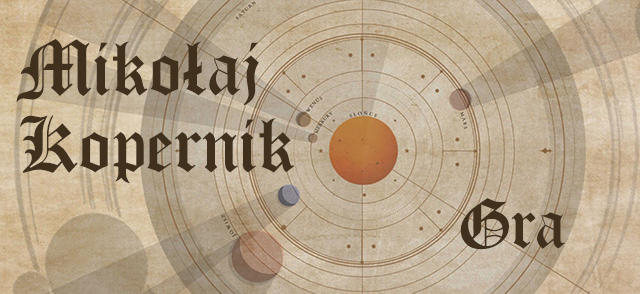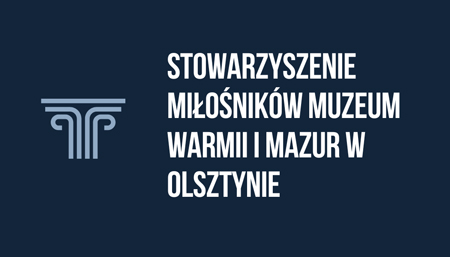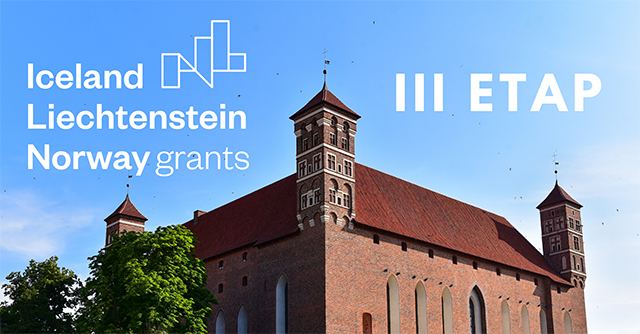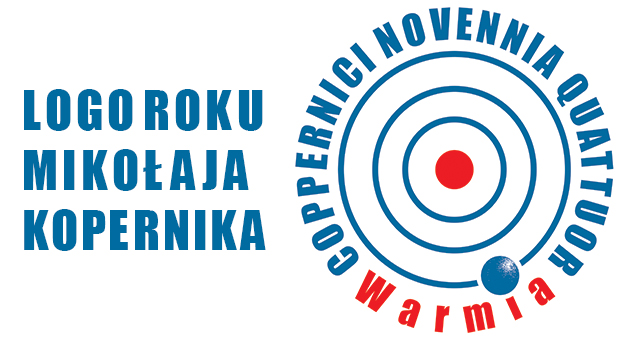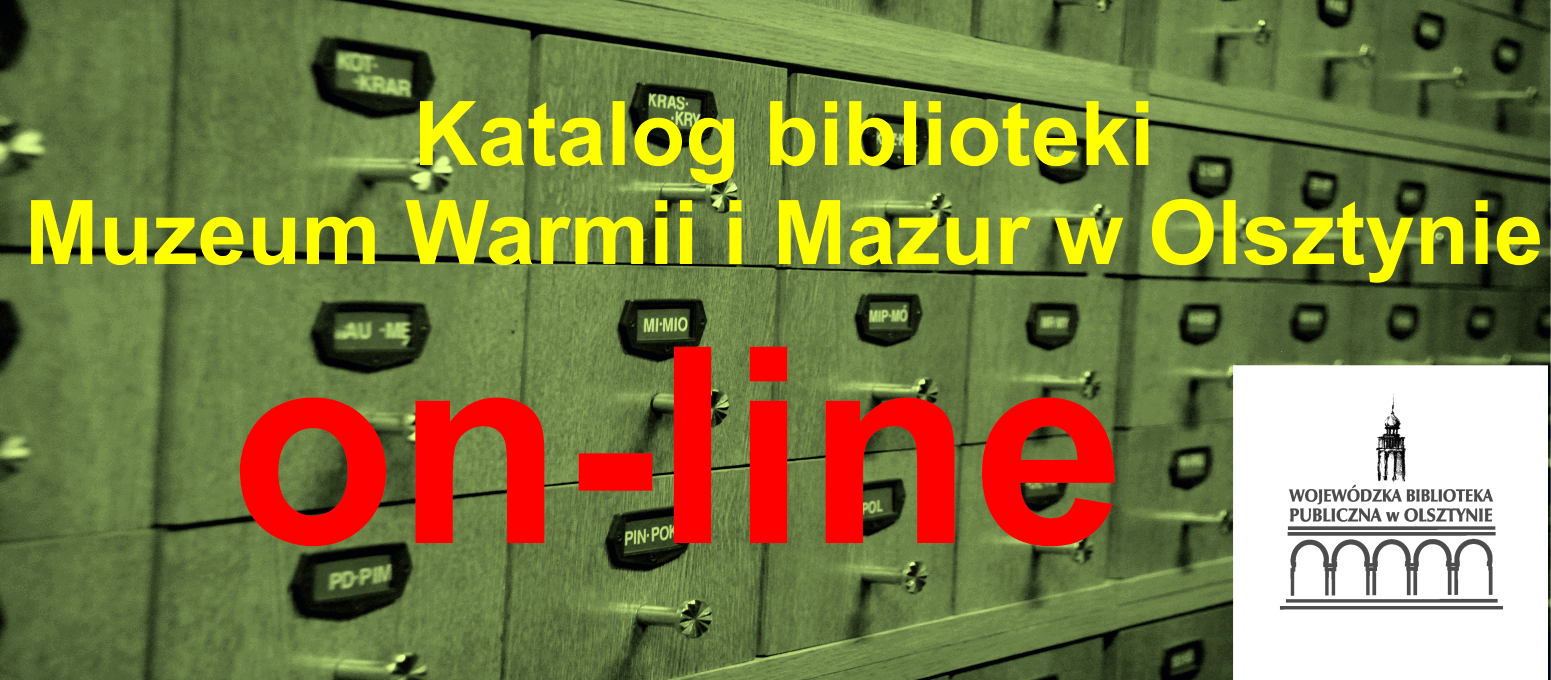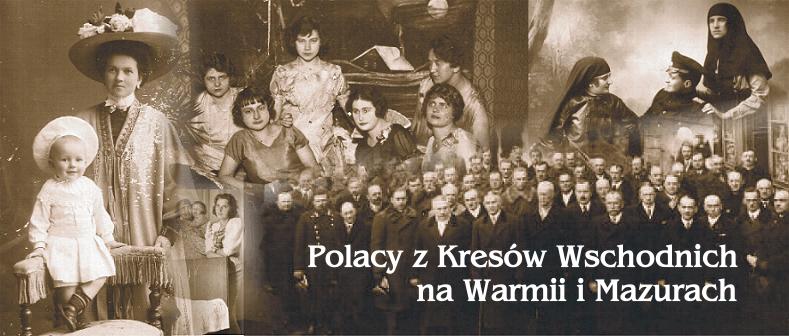Polish portrait painting of 19th and 20th c. from the collection of the Museum of Warmia and Masuria in Olsztyn
Curator: Grażyna Prusińska
Human desire to leave a trace of one’s own image has accompanied people since the dawn of time: a figure reduced to a simple sign appeared on caves’ walls of the Paleolithic Age. What is in fact a portrait, represented in great numbers in various fields of art? What does human aim to memorialize his view derive from?
Both portrait and landscape have been the most popular motives in visual arts throughout the ages. Portraiture became a separate genre thanks to the fifteenth-century masters’ works in which self-portrait occupied an autonomous position and evolved to a sub-group within portraiture. Originally self-portraits were discreetly included in compositions of another type. Later they gained autonomy due to Albrecht Dürer who took particularly great pleasure in memorizing his handsome face.
To memorize – that is the main imperative of leaving one’s image for the descendants.
Portrait compositions are richly represented in the collection of the Museum of Warmia and Masuria. The paintings displayed at the exhibition lead the viewer through the 19th and 20th century. The exposition opens with Józef Poniatowski’s portrait by Joseph Grassi (1757-1838). He was an Austrian painter who arrived to Warsaw for the invitation from royal circles of Stanisław August Poniatowski, King of Poland. Between 1791 and 1794 Grassi would portray Polish aristocracy. The artist presented Prince Józef as a 17-year-old young man in a dandy-pose. The painting belongs to the archetype of classicising romantic portrait presenting the sitter’s elegant clothes and nonchalant pose, sophisticated composition and open landscape in the background.
In 1809 Grassi became professor at the Dresden Academy of Fine Arts. Antoni Blank (1785-1844) studied painting in his studio. The author of the “Portrait of Zofia Przerembska (Józef Załuski’s wife)” was born in Olsztyn. Since 1815 he lived in Warsaw where he co-created the Faculty of Fine Arts of the Warsaw University and ran the department of painting there. Antoni Blank’s portraits of the upper-middle class of Warsaw – bourgeoisie and intellectuals – were stylistically close to the German Biedermeier. He also made mythological compositions and sacral paintings, many of which can be seen in churches of Warsaw.
“Portrait of the Senator” by Wojciech Korneli Stattler (1800–1875) was made in a classical convention and bears a visible influence of the German Nazarenes – a group of painters who followed the ideas of the Italian Quattrocento. They were active in Rome (1820-1840) where Stattler studied and lived. He was a friend to Mickiewicz and Słowacki. He also painted one of the best known portraits of Chopin.
In 1831 Stattler became professor at the Cracow School of Fine Arts where he ran his painting studio. He introduced an innovative teaching programme with model study considered revolutionary at that time. Among his students was Andrzej Bronisław Grabowski (1833-1886). In his “Portrait of Ksawera Roińska” the silhouette of a young woman, gifted with ethereal beauty, was captured in half-figure – a typical depiction for Grabowski.
The twentieth-century portrait painting deviated from the previously dominant official image that had to be furnished with attributes showing the sitter’s social status and ancestral background. The gallery opens with a modernist composition of the outstanding representative of Young Poland’s art – Konrad Krzyżanowski (1872-1922). He spent his holidays with his wife in her family’s estate in Peremyl time and again, and this is where the displayed painting was made. Michalina Krzyżanowska is sitting up in a wide open window looking out on vast Ukrainian landscape and recording that special view on an easel in front of her. Krzyżanowski portrayed his wife in a freely composed pole of picture where the expressive foreground stands in contrast with endless and clear image of the background.
The Young Poland Artists’ fascination with folklore reflected in portraiture of the first decades of the 20th century. They admired the Tatra and Hutsul regions for their local customs as well as colourful and original peasants’ clothing. The sitters were usually portrayed against the landscape background, which, along with their clothes, enabled to faultlessly identify the place. The exception here is Józef Mehoffer’s (1869-1946) “Cracovian” which is undoubtedly a part of a larger composition.
The oeuvre of Stanisław Ignacy Witkiewicz (1885-1939) holds a unique place in the Polish portraiture of the interwar period. In 1925 the artist founded his own S. I. Witkiewicz Firma Portretowa, or the Portrait Company, with a strictly codified set of rules. Relations between S. I. Witkiewicz Portrait Company and its clients were presented as a list of articles. The firm’s regulations listed seven types of portraits on offer marked as: A, B, B+d, C, D, E, B+E. They varied in form, style and price. The artist signed his pieces with information on his emotional state or the use of the intoxicants while at work. The motto lying behind the activity of the Portrait Company was: “The customer must be satisfied. Misunderstandings are out of the question”.
Three of Witkacy’s portraits on display present Wacław and Wanda Malinowski – a theatre director and an actress from the National Theatre in Toruń. The Toruń episode in Witkacy’s life was connected with preparations for two premieres of his plays: “The Madman and the Nun” and “The Country House” (1924). That time was one of few when the artist’s playwriting and painting met with the approval and acceptation. When recalling that time Witkacy noted: “In my thoughts Toruń is a little heaven” (from the letter to Kazimiera Żuławska, Zakopane, 1924).
Mr and Mrs Malinowski were portrayed in two separate, realistic regulation types. The portrait of Wacław was made in “B+d” type and was additionally signed with two pieces of information: “Morning in Grand” and “À la Wyspiański due to paper”. The “B+d” type, in which the portrait of the theatre director was made, constituted a separate category among the Portrait Company’s realistic portraiture. Its typical features were the faithfulness to the sitter’s appearance, highlighting psychological depth, achieved by overdrawing his physiognomic traits. The “Portrait of Wanda Malinowska” fulfilled the criteria of type “B” that offered fuller characterisation, though without shadows of caricature, yet not excluding the possibility of prettiness in female portraits; the approach to the sitter was objective (“Regulations of the S. I. Witkiewicz Portrait Company”). In 1950-1960 Wanda Malinowska was engaged in the Stefan Jaracz Theatre in Olsztyn (her husband died in 1939), and it was her – as the owner of the portraits – who sold them to the Museum of Warmia and Masuria in 1970.
The Portrait Company was thought to be a source of income, yet its regulations provided for a possibility of painting with an easy mind. It was type “C” in which Witkacy chose a sitter himself from the circle of his friends only. No one could order such a piece.
Witkacy treated portraiture as a resultant of tension between the exterior and the hidden aspects of the model’s psyche.
The representatives of the Vilnius school: Ludomir Sleńdziński (1889-1980), Kazimierz Kwiatkowski (1893-1964), Jerzy Hoppen (1891-1969) and Zofia Wendorff-Serafinowicz (1905-1989) referred to the tradition of classicism. The Vilnius neoclassicism based on an idealised realistic convention which emulated the renaissance and academic way of imaging. Sleńdziński, the main representative and theoretician of that tendency, a graduate of the Saint Petersburg Academy of Fine Arts, was a Vilnian born and bred. He expressed the love and fascination to his city in one of his best paintings “Woman Selling Devotional Items”. It is a threefold portrait: of an old woman, of the painter’s family, and of the lost city. Narration close to that of Sleńdziński’s was introduced by his student, Zofia Wendorff-Serafinowicz. She depicted herself in “Self-portrait” standing half-length with painter’s attributes in her hands, against the background of winter cityscape with characteristic monuments of the Vilnius sacral architecture.
In the second half of the 20th century many artistic tendencies developed beyond the traditional convention of representation. The portraiture fell off the artistic mainstream, yet there were still acclaimed artists who made portraits a hallmark of their oeuvres.
Jerzy Nowosielski (1923-2011), a graduate of the Cracow Academy of Fine Arts, is considered to be one of the most significant Polish artists of the second half of the 20th century. He spent almost all his life in Cracow where he belonged to artistic avant-garde society whose leader was Tadeusz Kantor. In the 1940's and 1950's Nowosielski co-created artistic groups that proved essential for the Polish modern art’s evolution, just to mention the Theatre Cricot 2 and the Cracow Group. Nowosielski developed his own individual style formally rooted in icon painting and avant-garde and based on his private, deep devotion. He created monumental paintings and decorations for sacral interiors of Orthodox, Greek and Roman Catholic churches.
His works – set deeply in a tradition of iconographic painting and made in the prescribed style – created a modern formal code for that discipline. Although Nowosielski’s portraits do not represent saints’ images, they are rightly called “secular icons”, as they leave the sphere of the sacred for the ordinariness and everyday life. They keep, regardless of size, a characteristic monumentalism of form underlined by a sharp contour and flat patches of colour.
Edward Dwurnik (1943-2018) was a master of portraiture in a broad sense: as depicting reality. He was also an excellent classical portraitist – he made hundreds of portraits of people of culture, politics; he also portrayed his friends and painted portraits for commission. Dwurnik was a sharp observer. Apart from the resemblance, he introduced a narration with a well-chosen staffage that eliminated distance and added information building up a plot against historical context.
Dwurnik’s paintings chronicled events of the plebeian époque of the Polish People's Republic, grim years of the martial law and the absurdities of the Third Polish Republic. The artist created the social and generational image of the society, the Poles’ own portrait – grotesque, often ironic, and deeply true.
Both Nowosielski and Dwurnik directed their attention to the way of depicting a portrait by means of symbolic interpretation and metaphoric capture of that phenomenon. Portrait, image and face became just a formal sign of a universal message where resemblance to a sitter is a redundant category.
Human desire to leave a trace of one’s own image has accompanied people since the dawn of time: a figure reduced to a simple sign appeared on caves’ walls of the Paleolithic Age. What is in fact a portrait, represented in great numbers in various fields of art? What does human aim to memorialize his view derive from?
Both portrait and landscape have been the most popular motives in visual arts throughout the ages. Portraiture became a separate genre thanks to the fifteenth-century masters’ works in which self-portrait occupied an autonomous position and evolved to a sub-group within portraiture. Originally self-portraits were discreetly included in compositions of another type. Later they gained autonomy due to Albrecht Dürer who took particularly great pleasure in memorizing his handsome face.
To memorize – that is the main imperative of leaving one’s image for the descendants.
Portrait compositions are richly represented in the collection of the Museum of Warmia and Masuria. The paintings displayed at the exhibition lead the viewer through the 19th and 20th century. The exposition opens with Józef Poniatowski’s portrait by Joseph Grassi (1757-1838). He was an Austrian painter who arrived to Warsaw for the invitation from royal circles of Stanisław August Poniatowski, King of Poland. Between 1791 and 1794 Grassi would portray Polish aristocracy. The artist presented Prince Józef as a 17-year-old young man in a dandy-pose. The painting belongs to the archetype of classicising romantic portrait presenting the sitter’s elegant clothes and nonchalant pose, sophisticated composition and open landscape in the background.
In 1809 Grassi became professor at the Dresden Academy of Fine Arts. Antoni Blank (1785-1844) studied painting in his studio. The author of the “Portrait of Zofia Przerembska (Józef Załuski’s wife)” was born in Olsztyn. Since 1815 he lived in Warsaw where he co-created the Faculty of Fine Arts of the Warsaw University and ran the department of painting there. Antoni Blank’s portraits of the upper-middle class of Warsaw – bourgeoisie and intellectuals – were stylistically close to the German Biedermeier. He also made mythological compositions and sacral paintings, many of which can be seen in churches of Warsaw.
“Portrait of the Senator” by Wojciech Korneli Stattler (1800–1875) was made in a classical convention and bears a visible influence of the German Nazarenes – a group of painters who followed the ideas of the Italian Quattrocento. They were active in Rome (1820-1840) where Stattler studied and lived. He was a friend to Mickiewicz and Słowacki. He also painted one of the best known portraits of Chopin.
In 1831 Stattler became professor at the Cracow School of Fine Arts where he ran his painting studio. He introduced an innovative teaching programme with model study considered revolutionary at that time. Among his students was Andrzej Bronisław Grabowski (1833-1886). In his “Portrait of Ksawera Roińska” the silhouette of a young woman, gifted with ethereal beauty, was captured in half-figure – a typical depiction for Grabowski.
The twentieth-century portrait painting deviated from the previously dominant official image that had to be furnished with attributes showing the sitter’s social status and ancestral background. The gallery opens with a modernist composition of the outstanding representative of Young Poland’s art – Konrad Krzyżanowski (1872-1922). He spent his holidays with his wife in her family’s estate in Peremyl time and again, and this is where the displayed painting was made. Michalina Krzyżanowska is sitting up in a wide open window looking out on vast Ukrainian landscape and recording that special view on an easel in front of her. Krzyżanowski portrayed his wife in a freely composed pole of picture where the expressive foreground stands in contrast with endless and clear image of the background.
The Young Poland Artists’ fascination with folklore reflected in portraiture of the first decades of the 20th century. They admired the Tatra and Hutsul regions for their local customs as well as colourful and original peasants’ clothing. The sitters were usually portrayed against the landscape background, which, along with their clothes, enabled to faultlessly identify the place. The exception here is Józef Mehoffer’s (1869-1946) “Cracovian” which is undoubtedly a part of a larger composition.
The oeuvre of Stanisław Ignacy Witkiewicz (1885-1939) holds a unique place in the Polish portraiture of the interwar period. In 1925 the artist founded his own S. I. Witkiewicz Firma Portretowa, or the Portrait Company, with a strictly codified set of rules. Relations between S. I. Witkiewicz Portrait Company and its clients were presented as a list of articles. The firm’s regulations listed seven types of portraits on offer marked as: A, B, B+d, C, D, E, B+E. They varied in form, style and price. The artist signed his pieces with information on his emotional state or the use of the intoxicants while at work. The motto lying behind the activity of the Portrait Company was: “The customer must be satisfied. Misunderstandings are out of the question”.
Three of Witkacy’s portraits on display present Wacław and Wanda Malinowski – a theatre director and an actress from the National Theatre in Toruń. The Toruń episode in Witkacy’s life was connected with preparations for two premieres of his plays: “The Madman and the Nun” and “The Country House” (1924). That time was one of few when the artist’s playwriting and painting met with the approval and acceptation. When recalling that time Witkacy noted: “In my thoughts Toruń is a little heaven” (from the letter to Kazimiera Żuławska, Zakopane, 1924).
Mr and Mrs Malinowski were portrayed in two separate, realistic regulation types. The portrait of Wacław was made in “B+d” type and was additionally signed with two pieces of information: “Morning in Grand” and “À la Wyspiański due to paper”. The “B+d” type, in which the portrait of the theatre director was made, constituted a separate category among the Portrait Company’s realistic portraiture. Its typical features were the faithfulness to the sitter’s appearance, highlighting psychological depth, achieved by overdrawing his physiognomic traits. The “Portrait of Wanda Malinowska” fulfilled the criteria of type “B” that offered fuller characterisation, though without shadows of caricature, yet not excluding the possibility of prettiness in female portraits; the approach to the sitter was objective (“Regulations of the S. I. Witkiewicz Portrait Company”). In 1950-1960 Wanda Malinowska was engaged in the Stefan Jaracz Theatre in Olsztyn (her husband died in 1939), and it was her – as the owner of the portraits – who sold them to the Museum of Warmia and Masuria in 1970.
The Portrait Company was thought to be a source of income, yet its regulations provided for a possibility of painting with an easy mind. It was type “C” in which Witkacy chose a sitter himself from the circle of his friends only. No one could order such a piece.
Witkacy treated portraiture as a resultant of tension between the exterior and the hidden aspects of the model’s psyche.
The representatives of the Vilnius school: Ludomir Sleńdziński (1889-1980), Kazimierz Kwiatkowski (1893-1964), Jerzy Hoppen (1891-1969) and Zofia Wendorff-Serafinowicz (1905-1989) referred to the tradition of classicism. The Vilnius neoclassicism based on an idealised realistic convention which emulated the renaissance and academic way of imaging. Sleńdziński, the main representative and theoretician of that tendency, a graduate of the Saint Petersburg Academy of Fine Arts, was a Vilnian born and bred. He expressed the love and fascination to his city in one of his best paintings “Woman Selling Devotional Items”. It is a threefold portrait: of an old woman, of the painter’s family, and of the lost city. Narration close to that of Sleńdziński’s was introduced by his student, Zofia Wendorff-Serafinowicz. She depicted herself in “Self-portrait” standing half-length with painter’s attributes in her hands, against the background of winter cityscape with characteristic monuments of the Vilnius sacral architecture.
In the second half of the 20th century many artistic tendencies developed beyond the traditional convention of representation. The portraiture fell off the artistic mainstream, yet there were still acclaimed artists who made portraits a hallmark of their oeuvres.
Jerzy Nowosielski (1923-2011), a graduate of the Cracow Academy of Fine Arts, is considered to be one of the most significant Polish artists of the second half of the 20th century. He spent almost all his life in Cracow where he belonged to artistic avant-garde society whose leader was Tadeusz Kantor. In the 1940's and 1950's Nowosielski co-created artistic groups that proved essential for the Polish modern art’s evolution, just to mention the Theatre Cricot 2 and the Cracow Group. Nowosielski developed his own individual style formally rooted in icon painting and avant-garde and based on his private, deep devotion. He created monumental paintings and decorations for sacral interiors of Orthodox, Greek and Roman Catholic churches.
His works – set deeply in a tradition of iconographic painting and made in the prescribed style – created a modern formal code for that discipline. Although Nowosielski’s portraits do not represent saints’ images, they are rightly called “secular icons”, as they leave the sphere of the sacred for the ordinariness and everyday life. They keep, regardless of size, a characteristic monumentalism of form underlined by a sharp contour and flat patches of colour.
Edward Dwurnik (1943-2018) was a master of portraiture in a broad sense: as depicting reality. He was also an excellent classical portraitist – he made hundreds of portraits of people of culture, politics; he also portrayed his friends and painted portraits for commission. Dwurnik was a sharp observer. Apart from the resemblance, he introduced a narration with a well-chosen staffage that eliminated distance and added information building up a plot against historical context.
Dwurnik’s paintings chronicled events of the plebeian époque of the Polish People's Republic, grim years of the martial law and the absurdities of the Third Polish Republic. The artist created the social and generational image of the society, the Poles’ own portrait – grotesque, often ironic, and deeply true.
Both Nowosielski and Dwurnik directed their attention to the way of depicting a portrait by means of symbolic interpretation and metaphoric capture of that phenomenon. Portrait, image and face became just a formal sign of a universal message where resemblance to a sitter is a redundant category.




